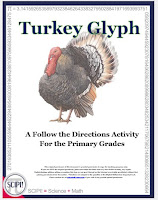An octagon is
any eight sided polygon. We often use a stop sign as an example of an octagon in real life. But in a actuality, a stop sign is a
regular octagon meaning that all of the angles are equal in measure (equiangular) and all of the sides have the same length (equilateral). For an eight sided shape to be classified as an octagon, it needs to have only eight sides.
I got to thinking about this since fall is just around the corner, and our family are BIG Ohio State football fans. Being raised in Ohio and having relatives who taught at Ohio State have fueled this obsession, but so has doing graduate work there. If you aren't familiar with the Ohio State Buckeyes, here is your opportunity to learn something new.
On the right you will see one of the many symbols for
THE Ohio State University. The red
"O" is geometric because it is an octagon (just count the sides). Even the beginning of the word Ohio is an octagon. (I just adore mathematics in real life!)
The Ohio Stadium, a unique double-deck horseshoe design, is one of the most recognizable landmarks in all of college athletics. It has a seating capacity of 102,780 and is the third largest on-campus facility in the nation. Attending football games in the Ohio Stadium or watching the game on television is a Saturday afternoon ritual for most Ohio State fans. The stadium is even listed in the National Registry of Historic Places. Anyone (and we have) who has been to a game in the giant horseshoe understands why. There are few experiences more fun or exciting! In the middle of the football field is the octagonal
O as seen in the picture below. (Another example of math in real life!)
Before I continue this posting, I must answer the age old question,
"What is a buckeye?" Since I grew up in Ohio, this question is easy for me to answer, but for everyone else, a buckeye is a nut. (I bet many of you thought it was candy.) Buckeye trees grow in many places in Ohio. The trees drop a "fruit" that comes in a spiked ball with a seam that runs around it. If you crack the seeds open, you can remove the "buckeye." When the nut dries, it is mostly brown in color but it has a light color similar to an over-sized black-eyed pea on one end. This coloration bears a vague resemblance to an eye hence the name, buckeye.
Then there is Brutus Buckeye, (a student dressed in a costume) the official mascot of
THE Ohio State University; so, you might say, since I was born and raised in Ohio, I am a nut! Brutus (as seen on the left) wears a headpiece resembling a buckeye nut, a block
O hat, (another octagon), a scarlet and gray shirt inscribed with the word
"Brutus" on the front and the numbers "00" on the back. Brutus also wears red pants with an Ohio State towel hanging over the front, and high white socks with black shoes. Both male and female students may carry out the duties of Brutus Buckeye as long as they are a committed Ohio State fan.
 |
| O-H-I-O |
Finally, if you ever are lucky enough to see four people with their hands in the air, forming letters of the alphabet, it is most likely four Ohio state fans spelling out O-H-I-O! That's how our grandchildren learned how to spell it! (The picture on the right is of our youngest son with his four groomsmen on the day of his wedding.)
And it is so-o-o easy to remember. Just use this riddle:
What is round on the ends and high in the middle? You guessed it -
OHIO!









